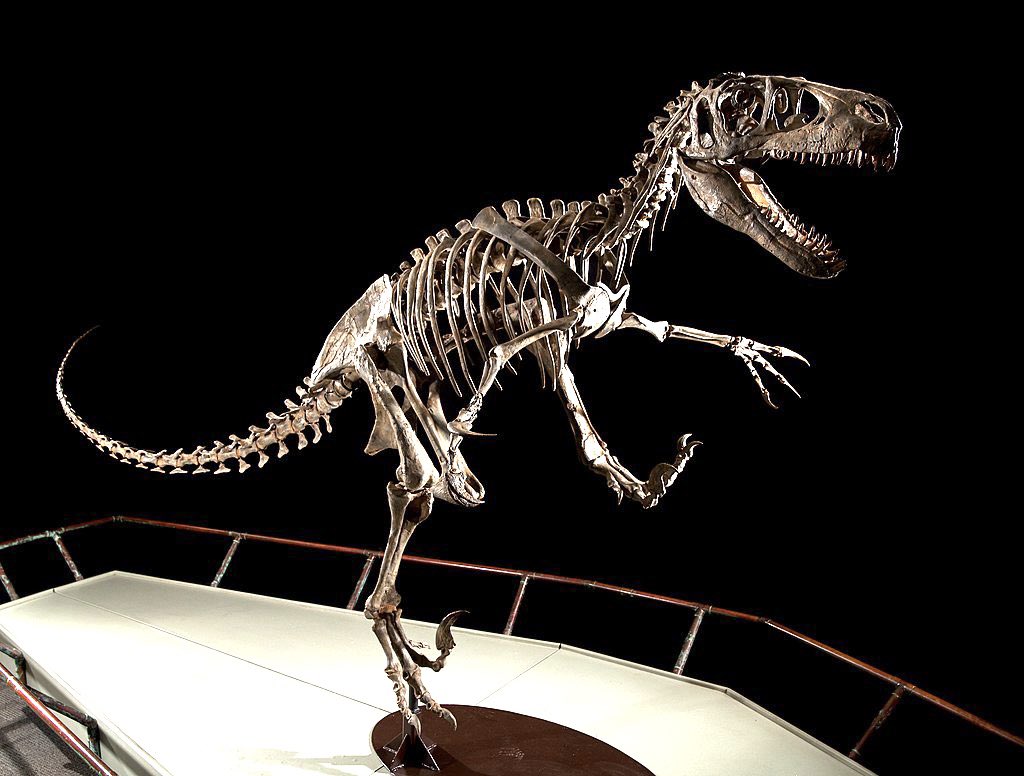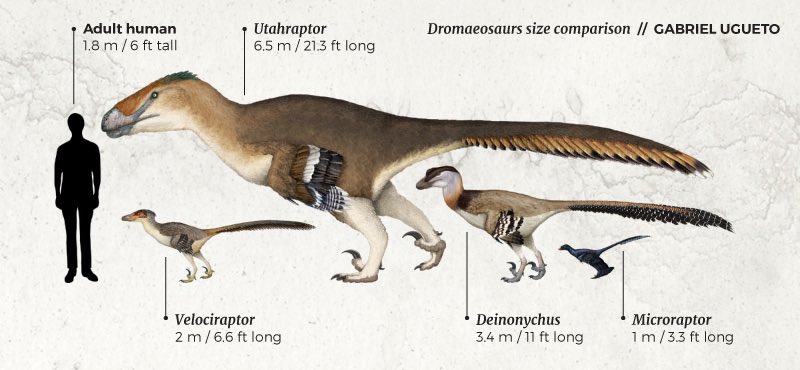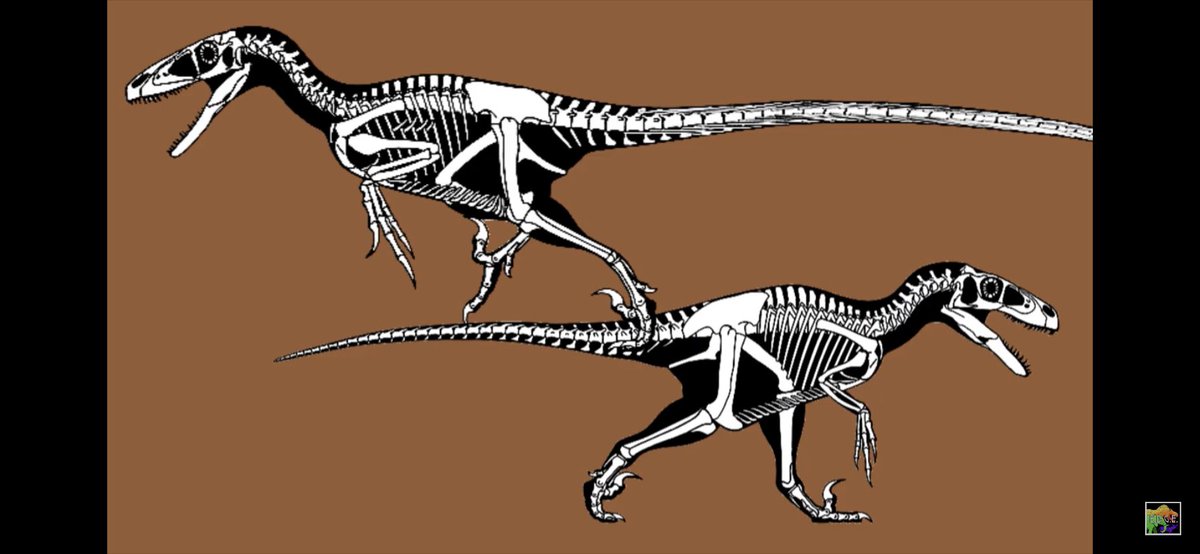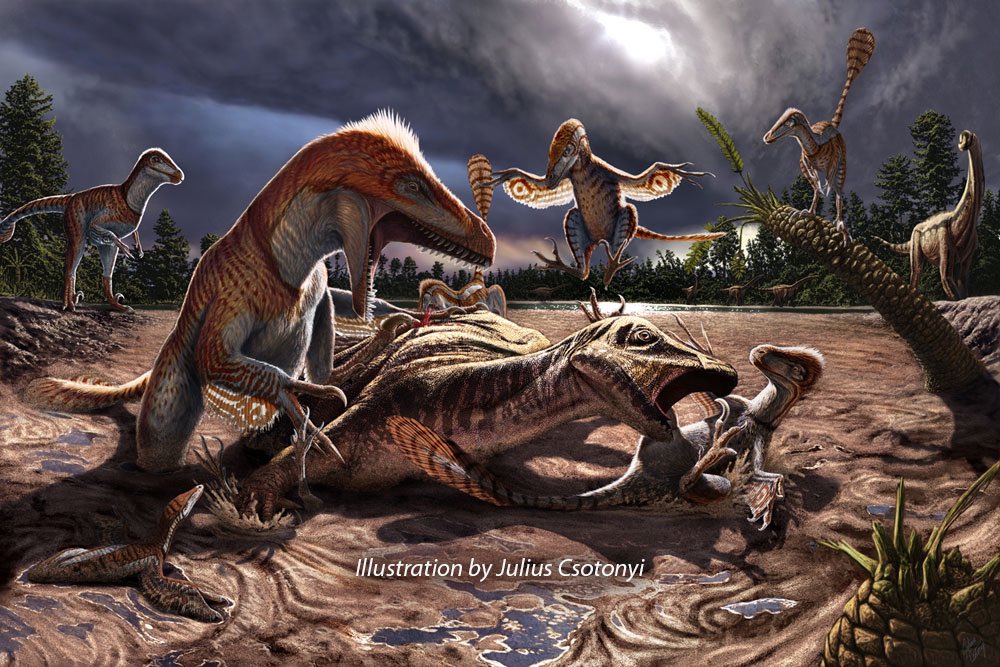60. Here’s #Utahraptor for #TheSummerOfTheropods & #FossilFriday, a large dromaeosaurid from the Early Cretaceous Period of North America and the largest member of the family Dromaeosauridae. Reconstructed skeleton in BYU Museum of Paleontology.
The holotype of Utahraptor consisted of the pedal ungual or toe claw, tibia, and premaxilla which were larger than those of Deinonychus.
Utahraptor was estimated to have reached up to 7 m (23 ft) long and somewhat less than 500 kg (1,100 lb) in weight, comparable to a polar bear in weight, although the size and weight of Utahraptor has fluctuated a bit. Art by @SerpenIllus.
Earlier depictions had Utahraptor resemble Deinonychus, but larger.
New depictions show Utahraptor as bulky with a larger head, a small torso, shorter arms, a short tail, and short, but stout legs, suggesting that Utahraptor was more of an ambush predator than a cursorial predator. Artwork by @skeletaldrawing from @EDGEinthewild.
Currently there is an ongoing project called the “Utahraptor Project” containing at least seven individuals of Utahraptor and the remains of at least one possible iguanodont herbivore. Art by Julius Csotonyi. https://www.gofundme.com/f/utahraptor
In 2018, Utahraptor became the state dinosaur of Utah.

 Read on Twitter
Read on Twitter





